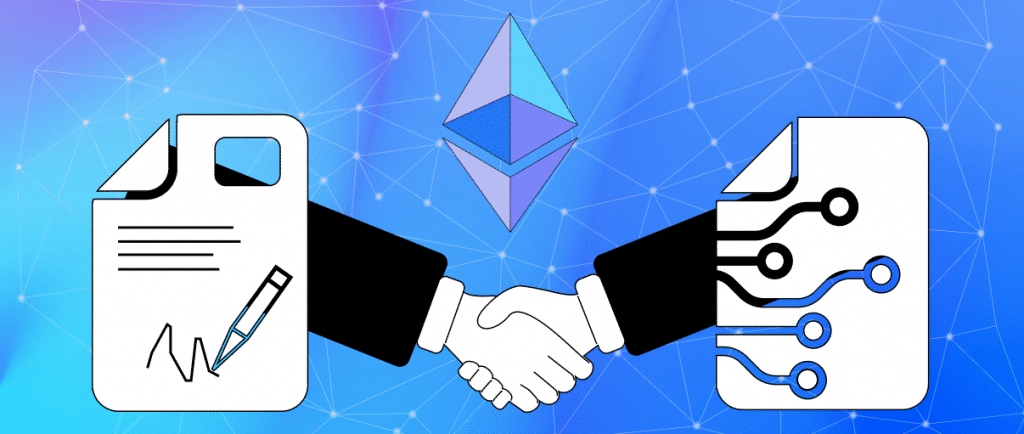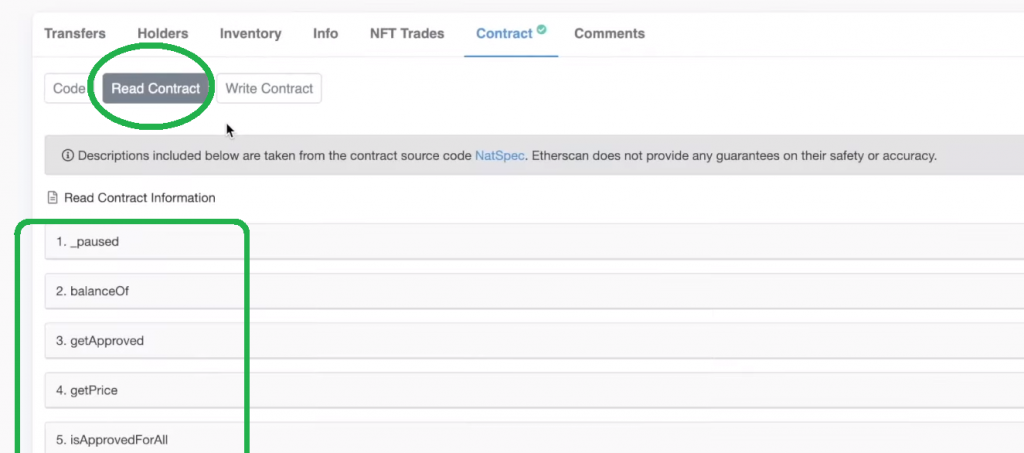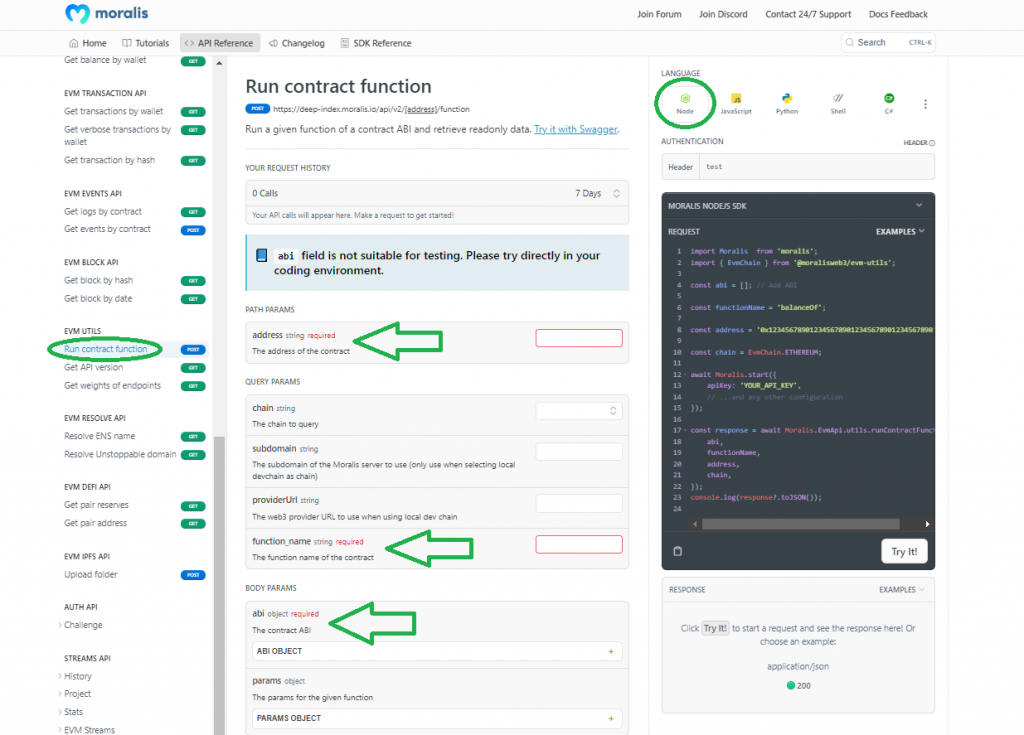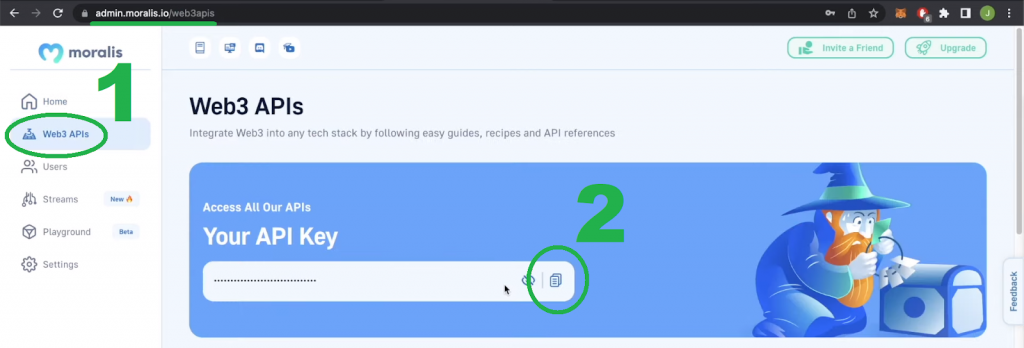When constructing dapps on Ethereum, you’ll in some unspecified time in the future must cope with Web3 contracts. Due to Moralis, dealing with Web3 contract strategies is simple, and with the next code snippet, you may run Web3 strategies on Ethereum or execute different EVM-compatible sensible contracts:
const response = await Moralis.EvmApi.utils.runContractFunction({
abi,
functionName,
tackle,
});
In case you’ve labored with Moralis earlier than, precisely how one can use the above traces of code. Then again, should you’re new to Moralis, undergo the upcoming sections to grasp the fundamentals. Additionally, be sure that to finish the tutorial ready for you herein. Consequently, you’ll have the ability to run Web3 contract strategies rapidly and simply! That mentioned, create your free Moralis account and comply with our lead.
Overview
Blockchain know-how is evolving quick and is shaping the brand new era of the net – Web3. Whereas we should still be within the early phases of the Web3 revolution, blockchain programming has already come a great distance. Therefore, we now have many wonderful instruments that allow devs to construct decentralized purposes (dapps) with out reinventing the wheel. Moralis – the last word Web3 API supplier – is among the core instruments. Due to its ever-evolving EVM API, Ethereum growth looks like a breeze! Furthermore, on this article, we’ll make the most of this software as we hone in on operating Web3 contract strategies.

We are going to begin immediately’s subject by explaining what Web3 contract strategies are and the way they work. Then, we are going to tackle a Web3 JS tutorial exhibiting you how one can make the most of the “runContractFunction” EVM API endpoint. Therefore, you’ll discover ways to use your JavaScript proficiency to run read-only Web3 strategies along with your “.js” scripts.
What are Web3 Contract Strategies?
Wanting on the “Web3 contract strategies” phrase, you may see it consists of three phrases. As such, it’s necessary to grasp what “Web3”, “contract”, and “strategies” are. Then, you’ll have the ability to put all of it collectively. We’ve already talked about above that Web3 is the brand new iteration of the net. It’s a pure evolution of the web initiated with the implementation of blockchain know-how. Nonetheless, it began with Web1, which was read-only. Subsequent, Web2 emerged with its read-write performance, which continues to be the net most individuals use immediately. Nonetheless, increasingly devs and customers are beginning to see the ability of Web3, which provides the part of possession.

Moreover, programmable blockchains are on the core of Web3, with Ethereum main the pack. These programmable blockchains allow devs to deploy on-chain items of software program or applications. The latter are often known as sensible contracts or Web3 contracts that automate numerous actions. Basically, sensible contracts set off predefined actions as predefined circumstances finalize. As such, Web3 contracts are set to be the important thing to automating the long run in a clear and simply method.

Nonetheless, strategies are loads like capabilities – they’re units of directions that carry out duties. Nonetheless, the core distinction between capabilities and strategies is that the latter are related to objects, whereas capabilities are usually not. Moreover, capabilities are outlined exterior of courses. Then again, strategies are outlined within courses and are part of them. Nonetheless, regardless of these variations, you’ll usually see the phrases “capabilities” and “strategies” used interchangeably.
So, Web3 contract strategies are strategies (or capabilities) which are a part of sensible contracts that may allow interplay with sensible contracts. That mentioned, on this article, we are going to concentrate on “name” strategies, which don’t contain sending transactions; they’re often known as read-only strategies.

How Do Web3 Strategies Work?
Within the earlier part, we talked about “name” strategies, however we even have the “ship” Web3 contact strategies. To elucidate how Web3 strategies work, we have to take a look at each of a lot of these strategies. So, we use “name” to learn contract knowledge. This additionally implies that these strategies don’t modify the contract’s storage (blockchain state). Therefore, there’s no transaction concerned with these strategies. Basically, they only learn numerous storage variables of the deployed sensible contract. Furthermore, “Moralis.EvmApi.utils.runContractFunction” is that kind of methodology. Amongst different parameters, it makes use of an ABI (software binary interface). With that in thoughts, these strategies work with “read-only” capabilities inside sensible contracts.
Then again, “ship” strategies work together with sensible contracts. They alter the contract’s storage by executing on-chain transactions. Accordingly, this sort of methodology triggers “write” capabilities inside sensible contracts.
To raised perceive how Web3 strategies work, it helps to look into sensible contracts additional. Thus, we encourage you to make use of Etherscan and discover numerous sensible contracts. As an illustration, you may take a look at on the “Cool Cats” NFT instance:

As soon as on the web page, scroll down and choose the “Contract” tab:

Wanting on the above screenshot, you may see the “Learn Contract” and “Write Contract” choices. They correspond to the “read-only” or “learn” capabilities and “write” capabilities which are inside this sensible contract. Moreover, the “Connect with Web3” button seems when you choose the “Write Contract” possibility. This means it’s essential to join your Web3 pockets to verify the associated transactions and canopy their charges.
Then again, there’s no “Connect with Web3” button beneath the “Learn Contract” possibility. Nonetheless, you do get to see all of the read-only Web3 contract strategies that this specific sensible contract consists of:

Web3 Contract Strategies Tutorial – The right way to Run Web3 Strategies on Ethereum
Now that what Web3 contract strategies are and how one can discover sensible contracts to know what choices they provide, it’s time we concentrate on immediately’s tutorial. Accordingly, we’ll take you thru the steps it’s good to full to make use of the “runContractFunction” endpoint offered on the prime of this text. Furthermore, for the sake of this tutorial, we are going to concentrate on the “Cool Cats” NFT sensible contract from the earlier part. After all, you should utilize this specific Moralis endpoint to concentrate on every other EVM-compatible sensible contract that features read-only capabilities.
Allow us to begin by visiting the documentation web page to run the contract operate:

Because the above screenshot signifies, to make use of this Web3 contract methodology, we have to present the required parameters. These embrace a sensible contract’s tackle, operate identify, and the contract’s ABI. There are another optionally available parameters that you could be discover by yourself. Let’s simply briefly discuss concerning the chain parameter. By default, Moralis’ EVM API focuses on Ethereum, however you should utilize this parameter to concentrate on every other supported EVM-compatible chain.

All in all, the “runContractFunction” endpoint allows you to incorporate the identical performance that you may manually discover on Etherscan through the “Learn Contract” possibility (as offered above). Moreover, on the top-right facet of the above documentation web page, you may choose the programming language and frameworks you wish to work with. Nonetheless, on this tutorial, we’ll concentrate on NodeJS.
Instance Challenge: Incorporating Web3 Contract Strategies in a NodeJS Dapp
This part will educate you how one can create a NodeJS dapp and correctly incorporate the “runContractFunction” endpoint. Additionally, you will discover ways to get hold of your Moralis Web3 API key – the gateway to utilizing one of the best Ethereum API in 2023. So, let’s open Visible Studio Code (VSC) and dive proper in.
You’ll be able to comply with our lead and create a “ContractFunctions” folder and open it in VSC. Then, use your terminal to initialize a NodeJS challenge by coming into the next command:
npm init -y
Because of operating the above command, you’ll see a “package deal.json” file in your file tree:

Subsequent, initialize an “index.js” file by utilizing the command under:
contact index.js
You’ll use the “index.js” script to write down the logic associated to this instance challenge. Nonetheless, earlier than you begin coding, be sure that to put in all of the required dependencies:
npm i moralis dotenv
Nonetheless, additionally create your “.env” file and populate it with “MORALIS_KEY = ””:

As the worth for this atmosphere variable, it’s good to enter your Moralis Web3 API key, which you’ll get hold of in two easy steps (see the picture under). Nonetheless, earlier than you may entry your Moralis admin space, it’s good to create your free Moralis account. So, in case you haven’t completed so but, use the hyperlink within the introduction or go to Moralis’ homepage and click on on the “Begin for Free” button.

Together with your Moralis API key in place, open your “index.js” file. Then, import Moralis and require “.env”:
const Moralis = require(“moralis”).default;
require(“dotenv”).config();
The following step is to outline the ABI you wish to concentrate on. We advocate you comply with our lead and use the “Cool Cats” contract.
Acquiring a Good Contract’s ABI
Revisit the “Cool Cats” contract’s Etherscan web page and choose the “Code” possibility subsequent to the above-covered “Learn Contract” and “Write Contract” choices:

By scrolling down the “Code” web page, you’ll get to the “Contract ABI” part (see the picture above). Then, use the copy icon to repeat this ABI. Subsequent, return to VSC and create a brand new file. You’ll be able to name it “abi.json” and paste the copied ABI into that file. Transferring on, press “Shift+Possibility+F” on Mac (or Home windows/Linux equal) to rearrange the content material into traces. When you’ve saved the modifications, you may seek for “getPrice“, and you’ll find one among this contract’s Web3 contract strategies or capabilities:

Moreover, “getPrice” is the primary methodology we are going to concentrate on when implementing the “runContractFunction” endpoint.
Implementing the “runContractFunction” Endpoint
Return to your “index.js” file and create a brand new “ABI”:
const ABI = require(“./abi.json”);
Subsequent, you’ll initialize Moralis utilizing your Web3 API key and create an async operate. Contained in the latter, you’ll use the “runContractFunction” endpoint and the “Cool Cats” contract’s particulars. So, these are the traces of code it’s good to add:
Moralis.begin({
apiKey: course of.env.MORALIS_KEY
}).then(async()=>{
const response = await Moralis.EvmApi.utils.runContractFunction({
tackle: “0x1A92f7381B9F03921564a437210bB9396471050C”,
functionName: “getPrice”
abi: ABI
});
console.log(response.uncooked)
})
With the above traces of code in place, you’re prepared to make use of the next command to run your script:
node index.js
As a response, you need to see the preliminary token value for “Cool Cats” NFTs in your terminal:

After we additionally take into account that the costs in ETH are displayed with 18 decimal locations, the above end result tells you that the preliminary value was 0.02 ETH.
If you wish to discover ways to use the “runContractFunction” endpoint for the “tokenURI” operate, use the video under (beginning at 6:36). Furthermore, you’ll discover ways to correctly work with its sorts of strategies since that Web3 contract methodology makes use of an extra parameter.
Final however not least, beginning at 8:45, the video will show a neat instance of how you should utilize the above-obtained preliminary value together with Moralis’ “getNFTLowestPrice” NFT API endpoint. After all, that’s simply one of many numerous choices to additional make the most of the ability of “runContractFunction“. When combining all Web3 contract strategies with Moralis’ Ethereum Web3 API, the sky’s the restrict.
Exploring Web3 Contract Strategies – The right way to Run Web3 Strategies on Ethereum – Abstract
In immediately’s article, we took on fairly a journey. First, we ensured we bought you all on the identical web page by masking the fundamentals. As such, we defined what Web3 contract strategies are and the way they work. Then, you had an opportunity to comply with our lead and create a easy NodeJS dapp. The latter targeted on the “Cool Cats” contract’s “getPrice” name methodology. By finishing this problem, you now know how one can use Moralis’ EVM API to name read-only Web3 contract strategies.
In case you are severe about utilizing Moralis to develop dapps the straightforward method, be sure that to dive deep into the last word EVM API documentation. That is the place to check all of Moralis’ Web3 API endpoints and sort out the widest scope of Web3 tutorials. As well as, we advocate exploring different blockchain growth matters coated by the Moralis YouTube channel and our crypto weblog. For instance, among the newest articles evaluate ethers.js vs Web3 streams and Web3.js vs ethers.js. Plus, you may learn up on getting the token steadiness of an tackle, getting all tokens owned by a pockets, how one can take heed to the blockchain, and way more.
Nonetheless, in case you are excited by going full-time crypto with confidence and credibility, you need to take into account enrolling in Moralis Academy. That is the place the place you and your whole group can change into blockchain-certified and future-proof what you are promoting. Yow will discover many programs on the academy, and we advocate beginning with the basics. That mentioned, given the monetary crises that the world is dealing with, now may be one of the best time to grasp DeFi.
































